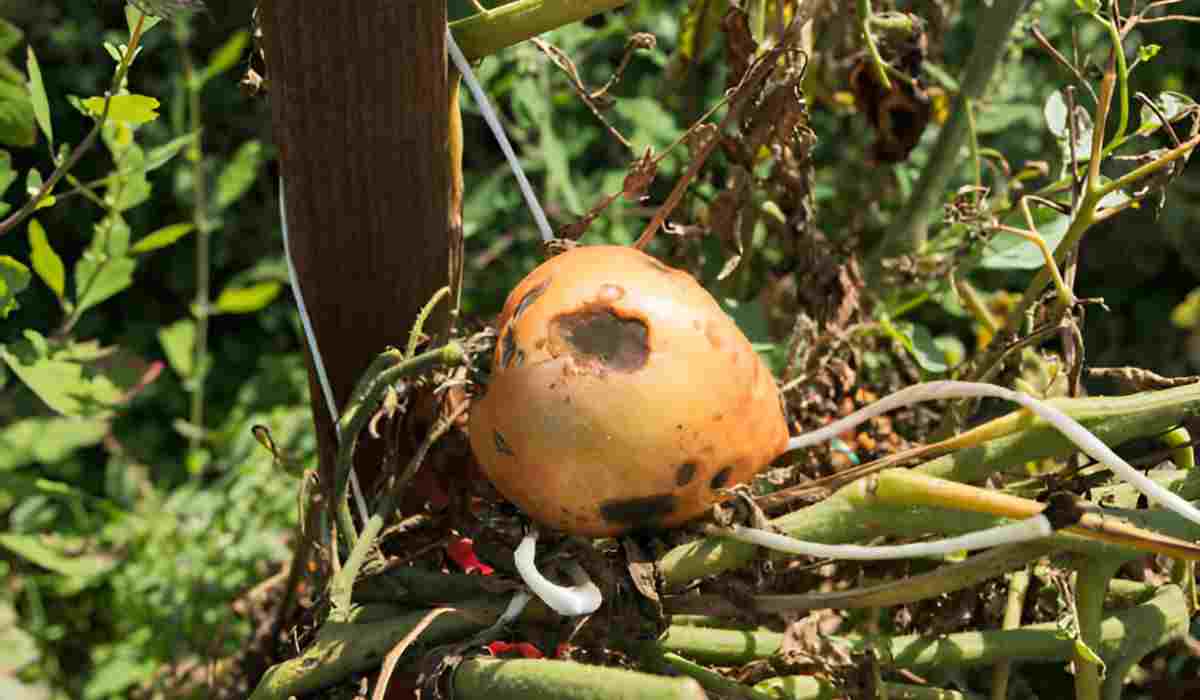What is Blossom End Rot?
Blossom End Rot (BER) is a physiological disorder that affects tomatoes, causing black, sunken, and rotten spots at the bottom of the fruit. Many gardeners wonder, why do my tomatoes have black bottoms? or why does a tomato turn black on the bottom? The primary cause of BER is calcium deficiency and inconsistent watering. BER also affects peppers (blossom end rot on bell peppers), squash (squash blossom end rot), pumpkins, eggplants, and watermelons (watermelon blossom end rot).

What Causes Blossom End Rot?
Symptoms:
- Water-soaked spots on the bottom of tomatoes
- Dark brown, leathery, and sunken patches (brown rot on tomatoes)
- Rotting as the fruit develops (tomatoes rotting before ripening)
Causes:
- Calcium deficiency or poor calcium uptake (is blossom end rot caused by calcium deficiency?)
- Inconsistent watering (does overwatering cause blossom end rot?)
- Excess nitrogen in soil, preventing calcium absorption (too much fertilizer on tomato plants)
- Root damage due to excessive cultivation
- Environmental factors like cold soil, heat stress, and high humidity
Many gardeners ask, what causes tomato blossom end rot? or what causes tomatoes to rot from the bottom? The main reason is calcium imbalance, often due to moisture fluctuations or excessive nitrogen.
How to Prevent Blossom End Rot?
Soil & Calcium Management
- Maintain soil pH between 6.0 and 7.0 (check soil pH and correct as needed) for optimal calcium absorption.
- Test soil regularly to ensure sufficient calcium levels (test calcium levels and adjust as needed).
- Use calcium-rich amendments like gypsum, garden lime (does lime prevent blossom end rot?), and crushed eggshells.
- Avoid excessive nitrogen fertilizers to prevent calcium uptake issues.
For those asking, how to add calcium to tomato plants? or best calcium fertilizer for tomatoes?, options include calcium carbonate, calcium sprays, or bone meal (bone meal for blossom end rot).
Watering & Moisture Control
- Maintain consistent soil moisture (1–1.5 inches of water per week).
- Avoid overwatering (can overwatering cause blossom end rot?), which leaches calcium from the soil.
- Apply a 2-inch layer of mulch (add mulch around tomato plants) to retain moisture and regulate soil temperature.
- Use drip irrigation or soaker hoses (keep tomato plants well-watered) to prevent water stress.
How to Correct Blossom End Rot
If BER is detected, affected fruits cannot be saved, but steps can prevent further damage:
- Adjust soil pH and calcium levels through amendments (lime for tomatoes blossom end rot).
- Ensure consistent watering practices.
- Apply calcium-enriched tomato fertilizers (tomato blossom end rot treatment).
- Protect plant roots by minimizing disturbances (avoid damaging the roots).
How to Cure Blossom End Rot
There is no immediate cure, but home remedies include:
- Tomato blossom end rot home remedy: Crushed eggshells, bone meal, or garden lime.
- Tums for blossom end rot: Some use Tums (calcium carbonate) to supplement calcium.
- Epsom salt blossom end rot: While Epsom salt provides magnesium, it does not fix calcium issues.
Blossom End Rot in Containers
Container-grown tomatoes are more susceptible due to fluctuating moisture levels. Preventative measures include:
- Using high-quality potting mix with added calcium (homemade calcium for tomato plants).
- Ensuring consistent watering.
- Applying mulch or compost to retain moisture.
- Fertilizing with a balanced tomato fertilizer containing calcium (best way to fix blossom end rot).
Blossom End Rot FAQs
How to Control Blossom End Rot on Tomatoes
- Keep Tomato Plants Well-Watered: Prevents calcium deficiencies.
- Add Mulch Around Tomato Plants: Retains soil moisture and prevents fluctuations.
- Don’t Over-Fertilize: Excess nitrogen interferes with calcium absorption.
- Care for the Roots: Avoid excessive tilling and transplant shock.
- Test Calcium Levels and Adjust as Needed: Prevents deficiencies before they impact plant health.
- Check Soil pH and Correct as Needed: Use lime or sulfur to adjust soil pH.
- Use a Tomato Fertilizer with Calcium: Supports ongoing plant health.
Blossom End Rot in Tomatoes: Causes and Prevention
Blossom end rot (BER) is a common tomato disorder caused by calcium deficiency and inconsistent watering. Heat stress, soil imbalances, and improper fertilization increase the risk, leading to dark, sunken spots on the fruit. Managing soil nutrients, moisture levels, and environmental conditions helps prevent BER and ensures a healthy tomato harvest.
For a detailed analysis, see the study by Dr. D. Hagassou, Dr. E. Francia, Dr. D. Ronga, and Dr. M. Buti, published in Scientia Horticulturae (2019):
Gardening Insights
- Edible Gardening: Balanced soil, proper watering, and nutrient management.
- Gardening Basics: Soil testing, fertilization, and watering best practices.
- Landscape & Garden Design: Proper plant spacing and mulching enhance soil moisture control and root health.
- Pests & Diseases: Though not a disease, BER weakens plants, making them more susceptible to pests.
- Planning Resources: A well-prepared garden plan prevents BER by ensuring ideal soil conditions and watering schedules.
By implementing these science-backed strategies, home gardeners and vegetable growers can prevent and manage Blossom End Rot, ensuring a productive tomato harvest.





